Meaning of One Water
The One Water LA Plan takes a holistic and collaborative approach to consider all water resources from surface water, ground water, potable water, wastewater, recycled water, dry-weather runoff, and stormwater as “One Water.” Through ongoing collaboration, the City’s departments and regional agencies identified new ways to integrate their respective practices and services by leveraging resources and maximizing benefits. One Water LA’s collaborative approach is shifting focus to a smarter urban water cycle. The Plan identifies projects, policies, and programs to make LA’s urban water cycle smarter by creating “short-cuts” that increase recycling and capture opportunities while ensuring multiple benefits. Below are a few examples of key integration opportunities identified in the One Water LA Plan that help reduce reliance on purchased imported water, develop more local water supply sources and improve water quality of receiving waterbodies.
By identifying the multiple benefits (environmental, economic, and social) of projects and programs, the City can implement more sustainable and cost effective solutions. Ultimately, One Water LA will lead to smarter land use practices, healthier watersheds, greater integration of the City’s various water systems, increased utility efficiency, stronger communities, climate change resiliency, and protection of public health.
One Water Process
The Plan’s success relied on integration of diverse perspectives. The One Water LA Team, led by LA Sanitation & Environment and the Los Angeles Department of Water and Power, dedicated countless hours to community outreach and engagement activities, inviting input and raising awareness about the programmatic purpose and needs. To open channels of communication, the One Water Team established various groups during the planning process. These groups included:
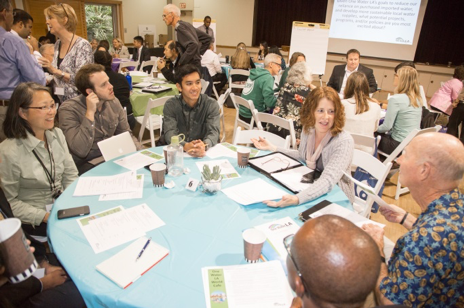
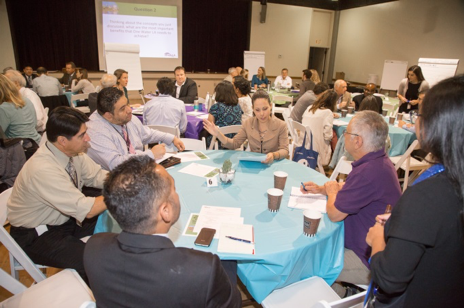
Figure 1 and 2: Stakeholders help identify the most important benefits to achieve
By bringing together all parties in the planning stage, a collaborative process was developed that will continue through the Plan’s implementation and beyond.
In addition to the various workshops and meetings held with each group, the team also conducted over 65 presentations and discussions at neighborhood councils, and conferences/events. One Water LA has also developed partnerships with local schools and universities to implement: a One Water LA Curriculum pilot program to educate and empower students on water conservation, water reuse, and stormwater capture; a marketing plan for One Water developed with help from Pepperdine University MBA students; a “Young Citizen Artists Project” that engages students to design new ideas to meet the City’s water challenges.
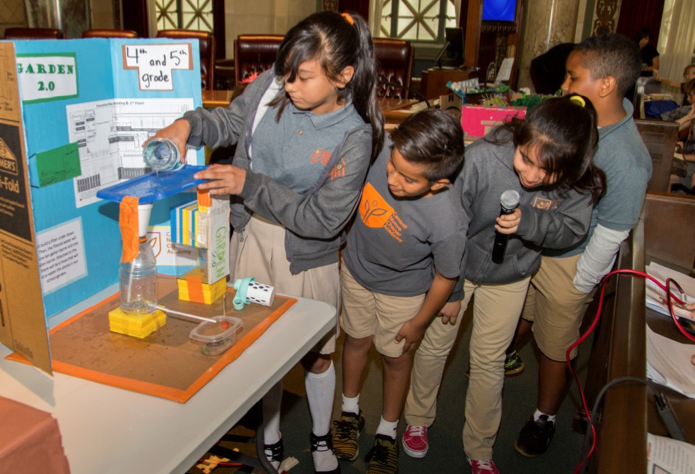
Figure 2: Students present their water conservation designs to a panel
One Water Elements and Recommendations
By looking at the entire water picture, the City and its partners can create more efficient projects that maximize resources and minimize cost. The recommendations in the plan are focused on providing multi-benefits and fostering integration and collaboration to achieve the vision and objectives of the plan. The recommendations are included in the categories listed below.
Stormwater and Urban Runoff Projects– Building from significant previous stormwater infrastructure planning efforts, the Stormwater and Urban Runoff Facilities Plan (SWFP, one of the plan’s elements) evaluates various types of studies, plans, projects, and programs. The plan used a “Three-Legged-Stool” approach to integrate water quality, water supply, and flood risk mitigation where possible.
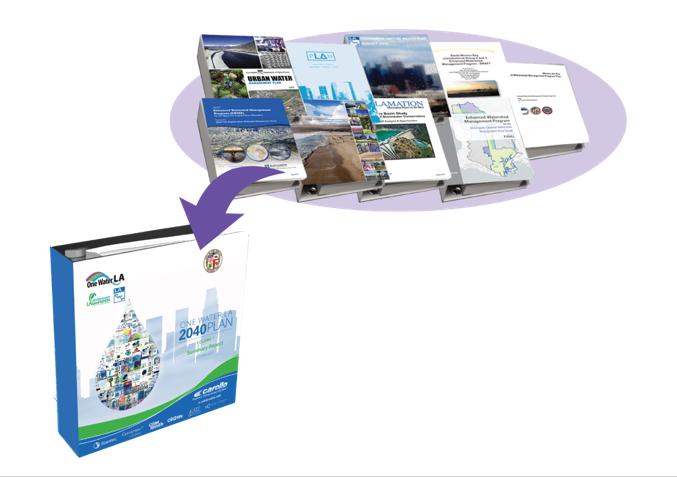
Figure 3: One Water LA leverages many existing plans
Ideally, all projects have some level of flood risk mitigation, water quality improvement, and water supply augmentation, and the SWFP attempts to select projects that achieve benefits in all three major areas recognizing that additional benefits in other areas will result from these projects . Projects were prioritized based on these three benefit areas, with projects that mitigate flood risks, improve water quality, and augment water supply given the highest priority, followed by projects that achieve only two of these three benefit areas, etc.
Stormwater and urban runoff from within the city are subject to many regulations, directives, and policies. Total maximum daily loads (TMDLs) drive stormwater quality goals, specifying the maximum amount of a pollutant a discharger can put into a water body without affecting the designated beneficial uses. In addition to prioritizing a project based on the three benefits, projects that meet stormwater quality compliance deadlines were also prioritized. The majority of projects (95 percent) meet two or more of the major benefits. Projects that provide all three major benefits also represent the majority (59 percent). In addition to these three benefits, the City recognizes the multitude of quantitative and qualitative benefits that stormwater projects provide, such as environmental justice, open space and recreational benefits.
Wastewater Projects– Recommendations in the plan provide an underlying documentation to make informed decisions on investments to repair, replace, or enhance existing facilities and construct new conveyance or treatment facilities through 2040. Water reuse was an important focus in the recommendations to help assure the City meets its goal of sourcing 50 percent of the water supply locally by the year 2035. Based on the design capacities and the projected future flows of each plant through year 2040, all four of the City’s existing water reclamation plants were confirmed to have sufficient capacity to manage the wastewater flows. Nonetheless, advanced treatment facilities would need to be constructed to maximize the reuse opportunities at each plant.
The Wastewater Facilities Plan analyzed the treatment plant modifications needed for potential potable or non-potable reuse strategies included in the future integration opportunities evaluation (discussed below). This analysis involved preliminary sizing of treatment process modifications, locating new processes, identifying conveyance needs, and making preliminary cost estimates. A trigger-based adaptive capital improvement plan (CIP) was developed for both the WWFP and the overall One Water LA Implementation Strategy to help the City navigate the wide range of future water recycling opportunities. With this approach, the City can adjust the implementation phasing and decisions based on future circumstances, such as changes in wastewater flows, regulatory, institutional, and other conditions.
Climate risk and resiliency assessments were also performed for both wastewater and stormwater facilities. Changes in temperature, precipitation, and sea levels will affect the physical and operational vulnerabilities of these facilities. Current and future potential climate conditions were considered in order to perform assessments and develop recommendations.
Current Integration Opportunities– A total of 44 current integration opportunities were identified by the team and the Steering Committee with the purpose of integrating water elements into current projects or planning efforts to improve the projects’ efficiency, benefits, cost effectiveness, and sustainability. The 44 current integration opportunities were narrowed down to 10 using a screening criteria process. The top five current integration opportunities were then further developed as case study examples for interdepartmental and interagency collaboration. Three of these five case studies have gained momentum and are already moving forward.
Future Integration Opportunities– Future integration opportunities were developed to identify long-term strategies that help achieve Mayor Eric Garcetti’s Sustainable City pLAn goals relating to water quality and water supply, and that are also in alignment with the One Water LA Objectives and Guiding Principles. Through a series of workshops and meetings, various existing and future water management strategies were identified. The Plan’s concept options are a mix of projects and programs that maximize recycled water use, enhance stormwater capture, contribute to supply sustainability, and provide multiple water quality benefits. A total of 27 concept options were identified that represent eight different water management strategies (Figure 4).
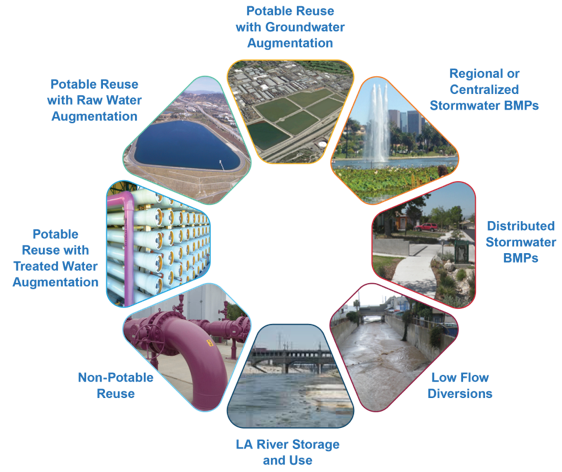
Figure 4: The Plan recommendations include a variety of project concepts that represent different water management strategies
A scenario planning analysis was conducted to develop a list of the most beneficial concept options under each of the four different themes: minimize cost; maximize environmental benefits; maximize institutional collaboration; and maximize local water supply. The most beneficial concept options from each themed portfolio were then combined into a preferred portfolio. The preferred portfolio includes existing supply sources, projects that are already in progress (as of November 2016), stormwater management projects that had already been proposed, and six new concept options. A trigger-based approach ensures flexibility and adaptability to future conditions as the prioritized list of future integration opportunities was developed to help the City decide which water management strategies and concept options are most viable for further study and could be implemented by 2040 or beyond.
Policies and Programs– One Water LA engagement of diverse groups helped ensure identification of 39 policies and programs that will guide the City to reduce roadblocks, improve cost-effectiveness, and allow for more coordinated, collaborative, and timely implementation of water projects. A comprehensive review of notes from the initial Steering Committee meetings, Stakeholder workshops, and more, led to the initial draft policy ideas list (over 200 ideas). During the refinement process none of the initial policy ideas were deleted, instead the ideas were grouped into the following 6 categories: policies and programs, research ideas, action items, in-progress or accomplished, additional recommendations, and beyond scope. The recommendations were then prioritized based on two parameters: priority and ease of implementation. The priority was guided by the number of objectives and guiding principles the policy or program could achieve and the variety of sources that recommended the need for the policy or program.
One Water Implementation and Next Steps
The One Water LA Plan is more than just a planning document – it’s a collaborative approach to change the way the City manages water. The City is committed to pursuing projects with multiple benefits, combining financial resources, and identifying funding opportunities to make One Water LA a reality.
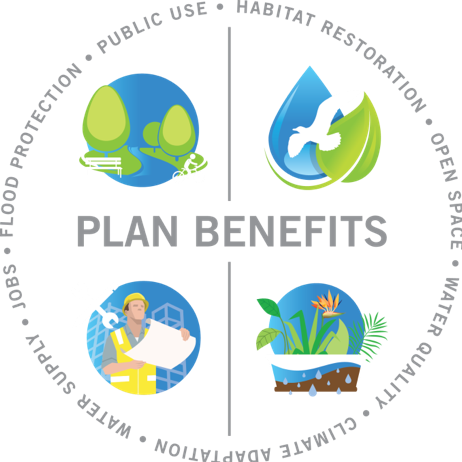
Figure 5: One Water LA plan benefits
A number of immediate and near-term steps are needed to implement the findings and recommendations presented in the One Water LA 2040 Plan. These steps include the following:
These activities are critical to One Water LA’s success in identifying multi-departmental and multiagency integration opportunities to efficiently, cost-effectively, and sustainably manage water.
Ali Poosti1, Lenise Marrero2, Azya Jackson3
1 LA Sanitation & Environment, 2714 Media Center Drive, Los Angeles, CA, 90065,
e-mail: [email protected]
1 LA Sanitation & Environment, 2714 Media Center Drive, Los Angeles, CA, 90065,
e-mail: [email protected]
3 LA Sanitation & Environment, 2714 Media Center Drive, Los Angeles, CA, 90065,
e-mail: [email protected]